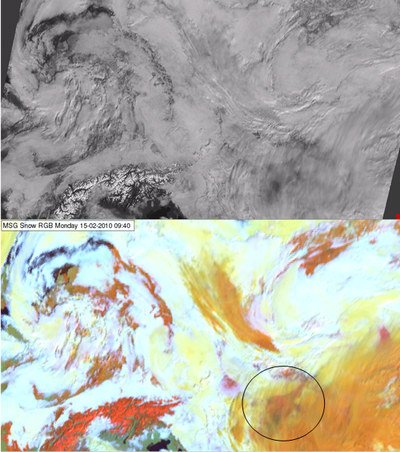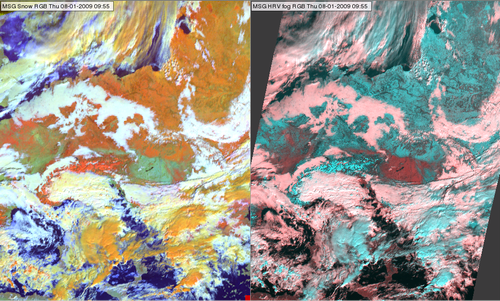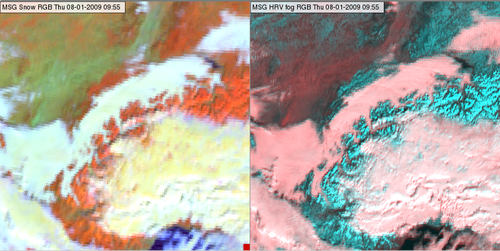Comparisons with other image types
Comparison with a single channel image
Fig. 11 compares a Snow RGB with an HRV image. The different features are much easier to recognize in the Snow RGB, although HRV has a better spatial resolution, which makes it easier to see the small-scale structure. However, in the black and white HRV image many objects are of similar brightness - the clouds, the snow, etc. The benefits of the RGB image are quite evident, such as in the encircled area. Here we see mainly snow covered surface through a hole in the water clouds through a thin cirrus layer. All these features are not easy (if even possible) to identify in an HRV image.
Distinguishing between water and ice clouds in HRV images might be even more problematic than distinguishing between snow and clouds. In a Snow RGB the ice and water clouds are easily separable: whitish colours indicate water clouds, while orange indicate ice clouds.
| Figure 11: HRV (top) and Snow RGB (bottom) images for 15 February 2010 at 09:40 UTC. |

|
Comparison with HRV Fog RGB
The main aim of Snow and HRV Fog RGBs is the same: differentiating cloud-free snowy surfaces from water clouds or fog. The spatial resolution is better for HRV Fog RGB, while the ice cloud / snow colour contrast is better in Snow RGBs (see for example Fig 12a). The benefits of high resolution are more evident when looking at a smaller area. Fig 12b shows a closer look at the Alps.
| Figure 12a: Snow RGB (left) and HRV Fog RGB (right) for 08 January 2009 at 09:55 UTC |

|
| Figure 12b: Snow RGB (left) and HRV Fog RGB (right) for 08 January 2009 at 09:55 UTC |

|